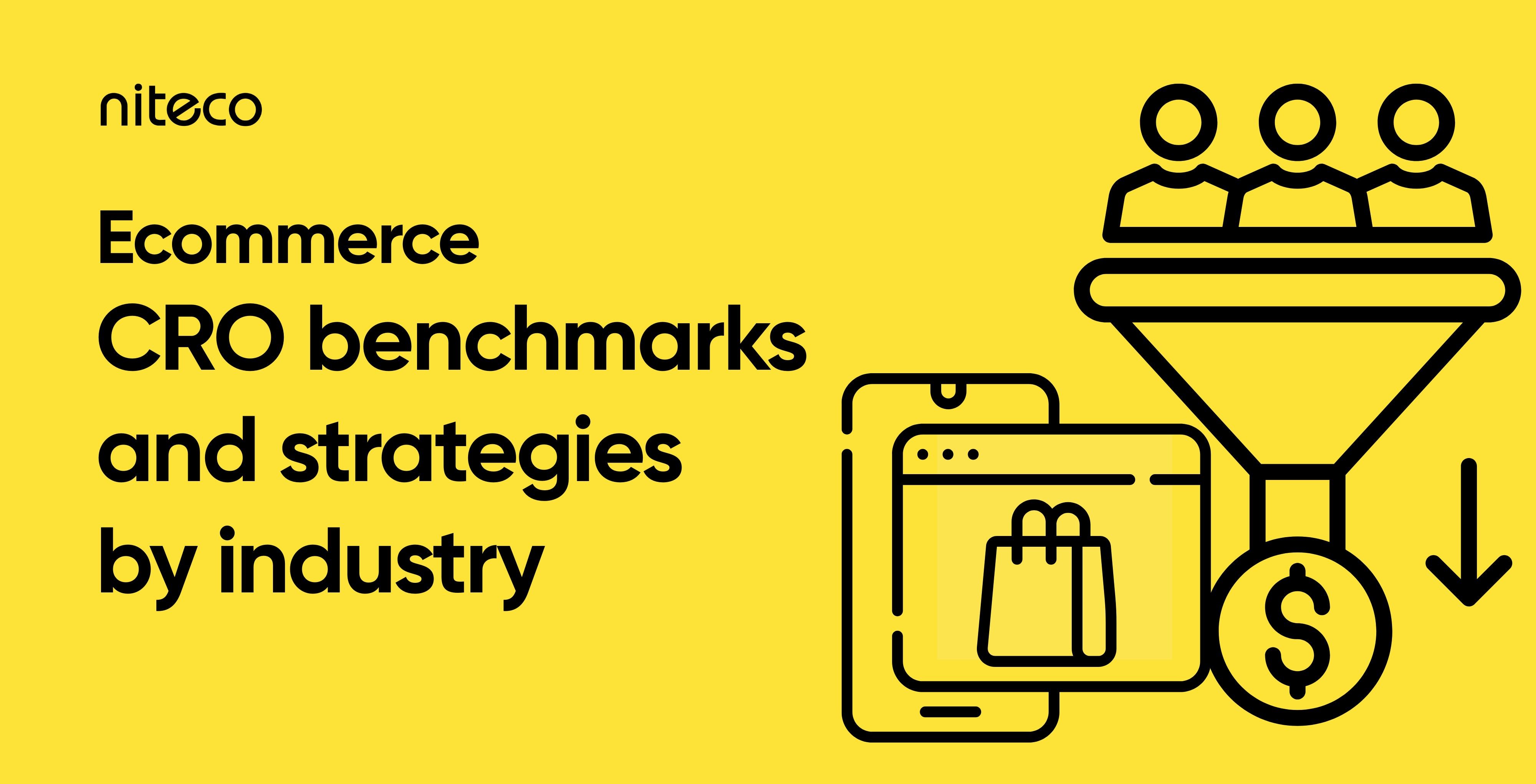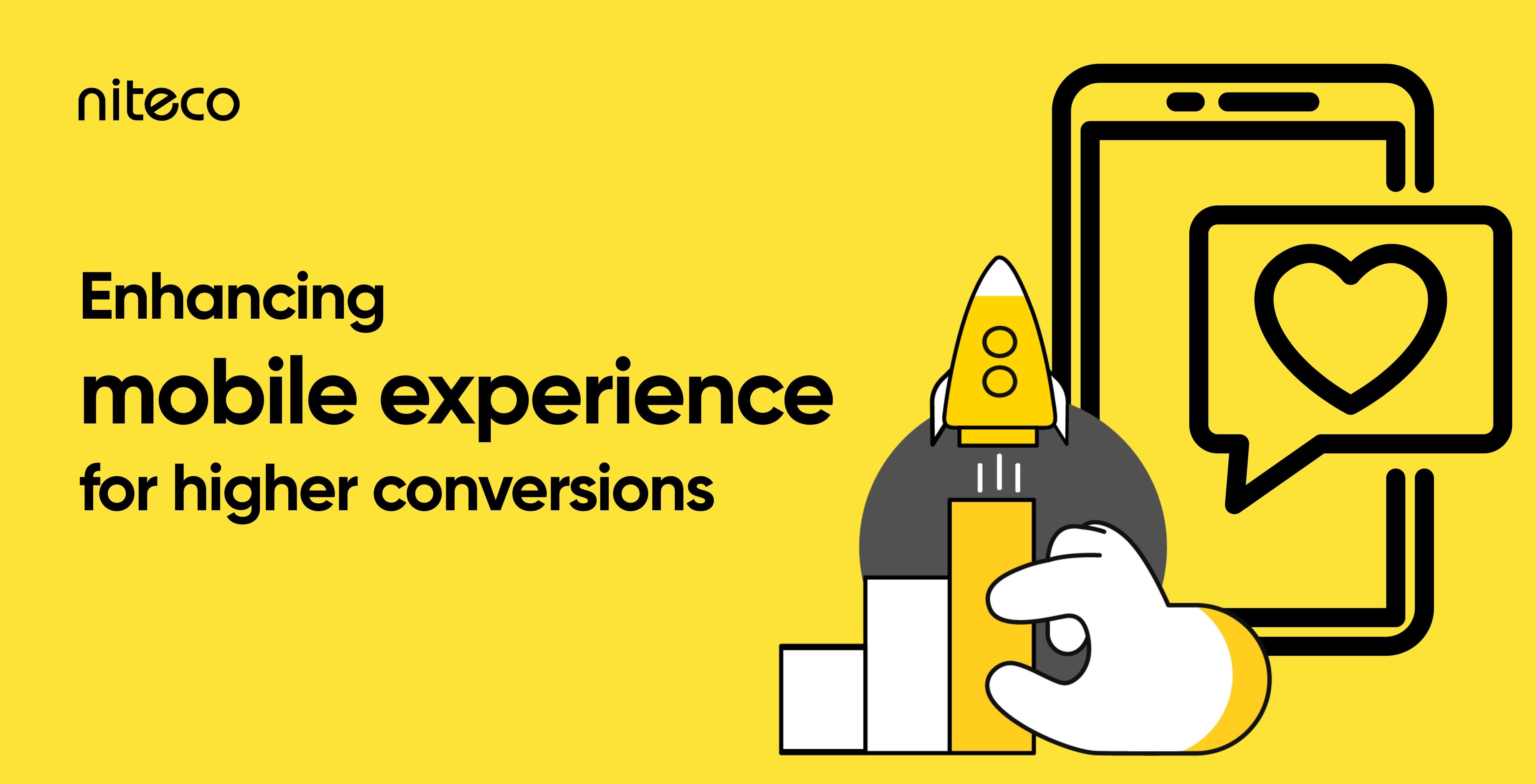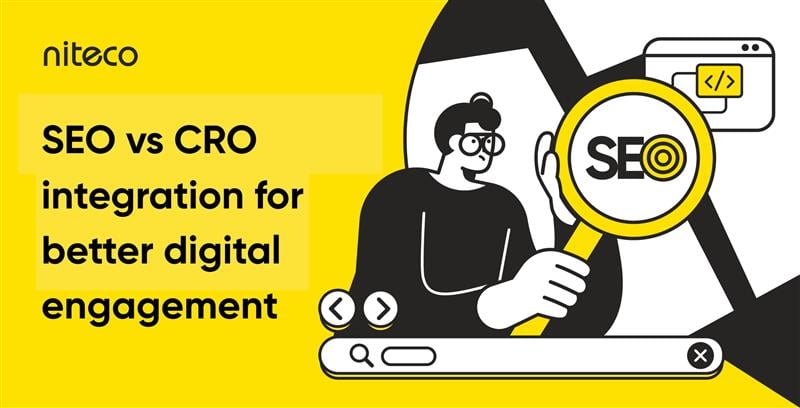Data-driven CRO (Conversion Rate Optimization) isn’t just a trend; it’s a strategic shift. According to McKinsey, data-driven organizations are 23 times more likely to acquire customers, 6 times more likely to retain them, and 19 times more likely to be profitable. That’s why data-driven CRO is essential; it bridges the gap between raw insights and real business results.
Dive into this article to learn how data analytics in CRO can enhance your conversion rate. All gained from Niteco’s hands-on experience and a data-first approach, helping brands get 385% increase in CVR. Let's go!
Why leveraging data analytics in CRO can enhance your conversion rate
Let’s break down the key reasons why leveraging data analytics can significantly enhance your conversion rate:
- Pinpoints friction in the user journey: Analytics tools like GA4, Hotjar, or Clarity are invaluable for identifying exactly where the problems lie: Which section users encounter friction and drop off during their journey and allowing you to fix them directly.
- Reveals what drives conversions (and what doesn’t): Data-driven CRO helps you understand what truly resonates with your audience. With A/B testing and behavioral segmentation, you can validate what truly drives engagement.
- Supports personalization at scale: 91% of users prefer personalized content and experiences, meaning personalization is an expectation. Data allows you to segment users by their behavior, device, source, or even location, enabling you to deliver tailored content and recommendations to each specific group.
- Eliminates bias and internal opinions: Have you ever been in a meeting where decisions hinge on personal opinions, past habits, or whoever speaks loudest? Data-driven CRO changes the conversation. It replaces “I think” with “we know.” This shift creates alignment across departments around what truly works, reducing wasted effort and endless internal debates.
- Drives measurable ROI with less waste: With data-driven CRO, you’re not chasing more traffic, you’re making the most of the visitors you’ve got. Simple changes, like tweaking a CTA or smoothing out the checkout flow, can lead to big results. Because every test is based on real user behavior and tied to clear outcomes, you spend less, waste less, and see more impact where it counts.
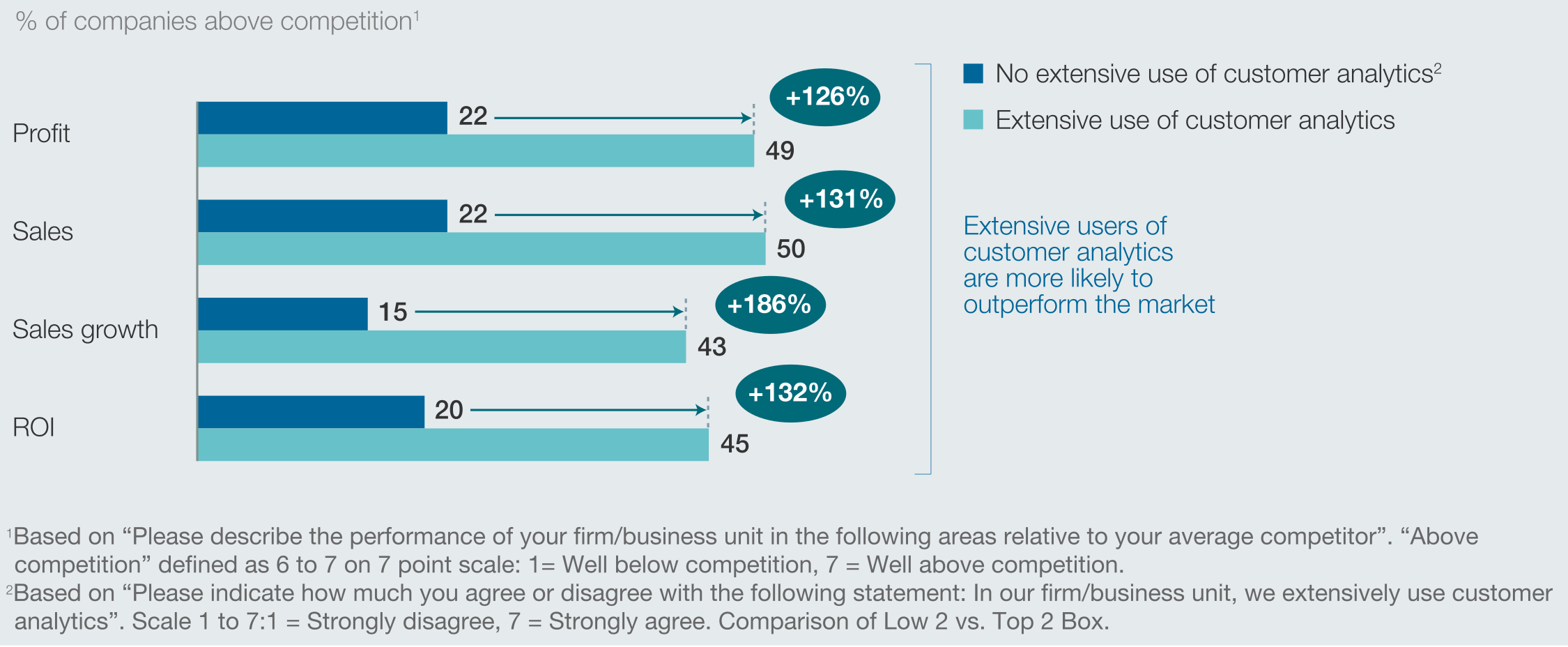
In-depth customer analytics play a key role in driving business success. Source: McKinsey
How Niteco utilizes data-driven strategies for client conversion optimization
At Niteco, we understand the power of data, which is why we take a data-first approach in every CRO project we handle.
In our work with a leading lingerie Canadian retailer, La Vie en Rose, Niteco combined analytics expertise and conversion optimization consulting to close a critical gap in mobile performance. We began with a complete overhaul of their GA4 implementation, fixing tracking inconsistencies and creating a single source of truth. With a reliable data foundation in place, our data-driven CRO team identified a key insight: desktop users using Quick View converted 2.4x more, but this feature wasn’t optimized for mobile.
By redesigning Quick View for mobile and integrating it with Add-to-Cart functionality, we saw a 14% increase in mobile add-to-cart actions and a 4.3% sitewide ATC lift year-over-year. Every change was validated through A/B testing in Optimizely, ensuring measurable business impact - not guesswork.
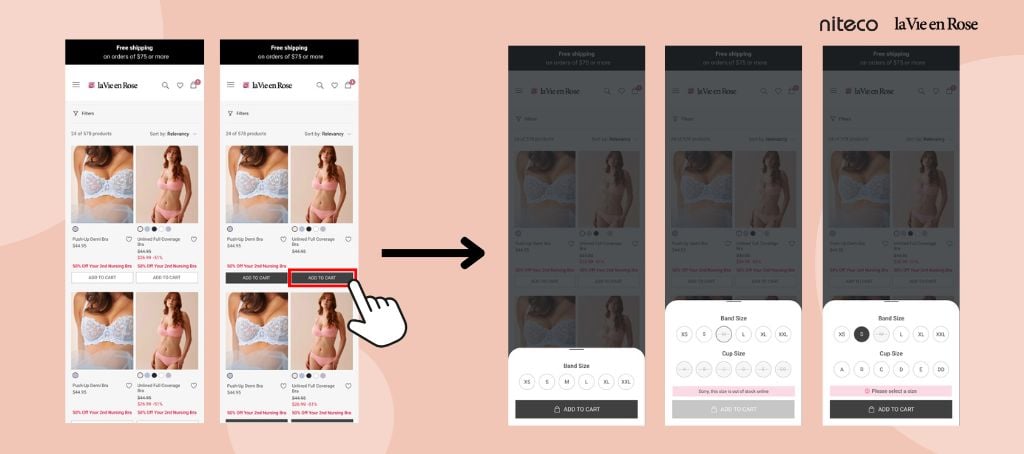
Niteco make Add-to-Cart button on la Vie en Rose's PDP sticky to increase ATC rates
Challenges of adopting a data-driven approach in CRO
While the benefits of data-driven CRO are clear, implementing it effectively isn’t always straightforward. With over 15 years of experience optimizing conversion performance for global brands, Niteco has seen the same core challenges come up time and again. These roadblocks don’t mean data-driven optimization is out of reach, but they do require a strategic approach to overcome.
1. Data overload without direction
Most organizations have access to more data than they know what to do with. Between GA4, Hotjar, Clarity, CRM platforms, and other tools, the problem isn’t collecting data, it’s knowing what matters.
Without clear prioritization, teams get buried in dashboards and reports, chasing noise instead of insights. The result? Analysis paralysis. Effective data-driven marketing conversion rate optimization requires clarity on which metrics connect directly to business outcomes.
2. Siloed teams and misalignment
CRO isn’t just a marketing function, it touches UX, product, and development too. But when each team is focused on its own KPIs, efforts can easily become fragmented.
A data-driven approach works best when teams align on shared goals, use the same source of truth, and collaborate across functions. Without that alignment, tests stall, learnings get lost, and momentum disappears.
3. Tool knowledge gaps
Platforms like Optimizely and GA4 are powerful, but only when properly configured and understood. Many teams underutilize these tools, either because of poor implementation or a lack of training.
If the data isn’t accurate or the team can’t interpret it confidently, even the most sophisticated tech stack won’t drive results.
4. Cultural resistance to testing
Finally, a truly data-driven culture demands openness to experimentation, and not every team is ready for that. Some organizations fear failure or hesitate to challenge assumptions. Others lack executive buy-in, which stalls progress before it starts.
Shifting from “set it and forget it” to a continuous testing mindset takes time, leadership support, and the right internal champions.
Best practices for leveraging data analytics in CRO
So, how can organizations overcome these challenges and successfully leverage data analytics to enhance their conversion rate? Here’s a clear, practical framework teams can apply to turn analytics into real-world impact:
1. Establish a repeatable CRO workflow
Define key conversion goals
Start by identifying what actions matter most to your business. Whether it's increasing add-to-cart events, form submissions, or newsletter signups, these conversion goals are the foundation of every data-driven decision. They determine what you measure, how you segment your audience, and where to optimize.
Gather and analyze relevant data
To uncover optimization opportunities, pull from both quantitative and qualitative sources:
- Quantitative: Click paths, bounce rate, funnel drop-offs, and conversion tracking using GA4, Mixpanel, or similar platforms.
- Qualitative: Heatmaps, user recordings, and survey feedback from tools like Hotjar and Usabilla.
This combined view shows not only where users drop off but also why.
Form hypotheses grounded in data
With the right data in hand, form evidence-based hypotheses. If users drop off at the pricing page, you might test simplified layouts, clearer value messaging, or urgency triggers like limited-time offers.
One example of this in action is our conversion optimization consulting work with Electrolux. Although their product detail pages attracted high traffic, most visitors didn’t convert, particularly due to underperforming cross-sell features. We identified that only 1.6% of users reached the “You May Also Like” (YMAL) section because it was buried low on the page, and the recommendations were randomly selected, lacking relevance.
Our hypothesis: better timing and smarter targeting would drive engagement. We tested a new experience - a pop-up version of YMAL - triggered after users scrolled below the fold, paused for 50 seconds, and began to scroll back up. The pop-up featured curated items from the same product sub-category.
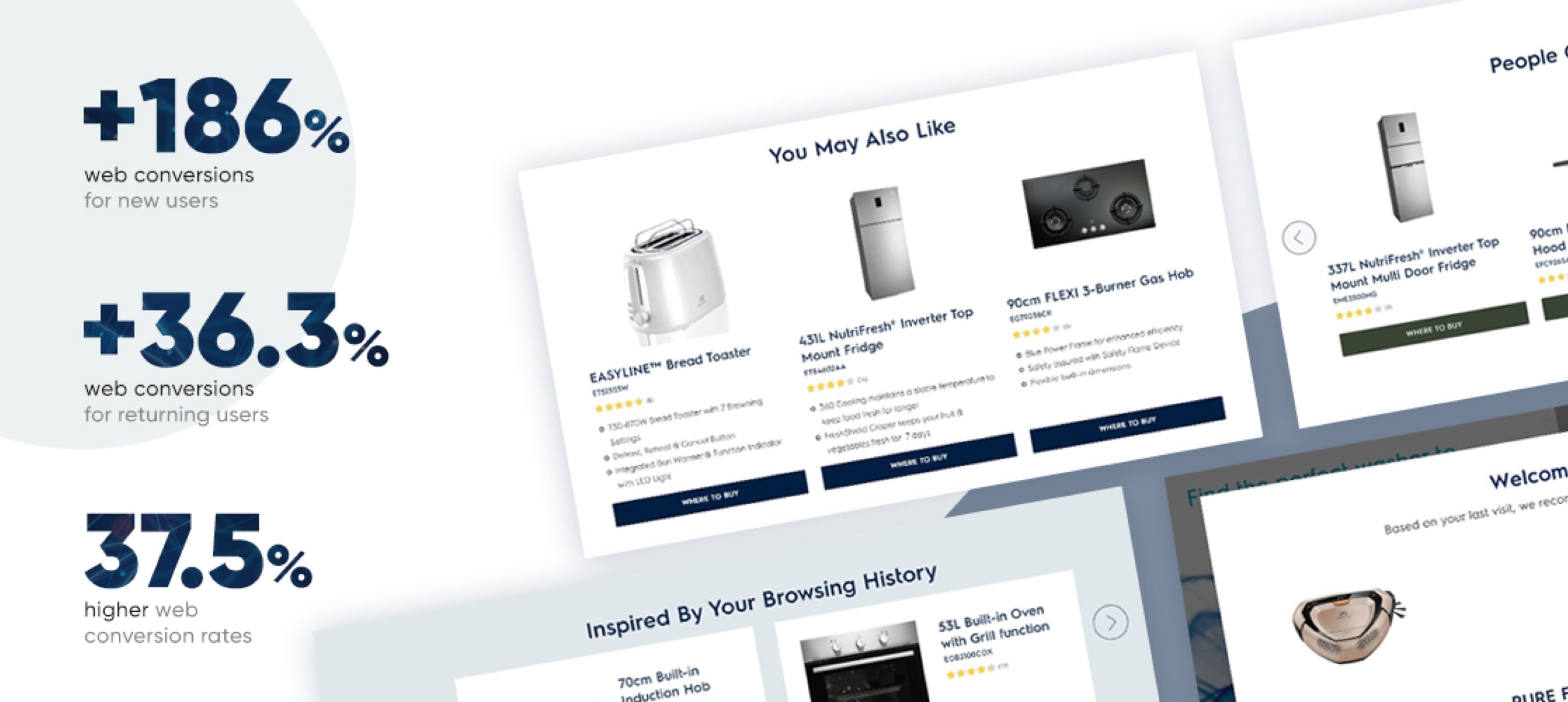
Electrolux and You May Also Like pop-up
This targeted test resulted in significantly higher engagement, more product clicks, and increased transaction volume, demonstrating how precise, data-driven adjustments can drive meaningful conversion gains.
Run structured experiments
Once you’ve got a solid hypothesis, it’s time to put it to the test. Run A/B or multivariate experiments using tools like Optimizely to see what actually works. You can check this article to see how Optimizely A/B testing helps improve marketing ROI. Don’t forget to track both statistical significance and ROI. That’s how you separate real wins from noise.
If you're unsure where to start, consider using frameworks like ICE (Impact, Confidence, Effort) or PIE (Potential, Importance, Ease) to prioritize tasks. Begin with high-traffic, high-value pages, such as product detail pages, shopping carts, or lead forms, where even small improvements can make a significant difference.
2. Tailor changes to user segments
Not all users behave the same way, so your optimizations shouldn’t treat them that way either. Use data to segment your audience by device type, location, traffic source, and on-site behavior. A visitor on mobile might need a faster, more streamlined experience, while desktop users might engage more with richer content or comparison tools. You can see how this plays out in our approach to enhancing mobile user experience for higher conversions.
What works for one group may not work for another, so avoid making blanket changes. Tailoring your tests and experiences to each segment ensures that every user gets what they need, and that your data-driven CRO efforts deliver results across the board.
3. Maintain continuous testing and learning
Finally, view CRO not as a one-time project, but as an evolving optimization cycle. Build a continuous feedback loop from your test results, which then informs an insight library that fuels future ideas. This commitment to ongoing testing and learning is key to sustained growth and consistent enhancement of your conversion rate.
Conclusion: Unlocking growth with data-driven CRO and Niteco
Conversion rate optimization powered by data is no longer merely a "nice-to-have"; it is the essential path to scalable growth. Understanding precisely what your users do, why they do it, and how to influence their actions is the key to achieving higher ROI and sustained success.
With years of hands-on CRO experience, Niteco helps many businesses translate complex analytics into real, measurable performance gains.
Are you ready to boost your conversions with a data-first approach and unlock your full growth potential? Talk to our CRO experts at Niteco today!

